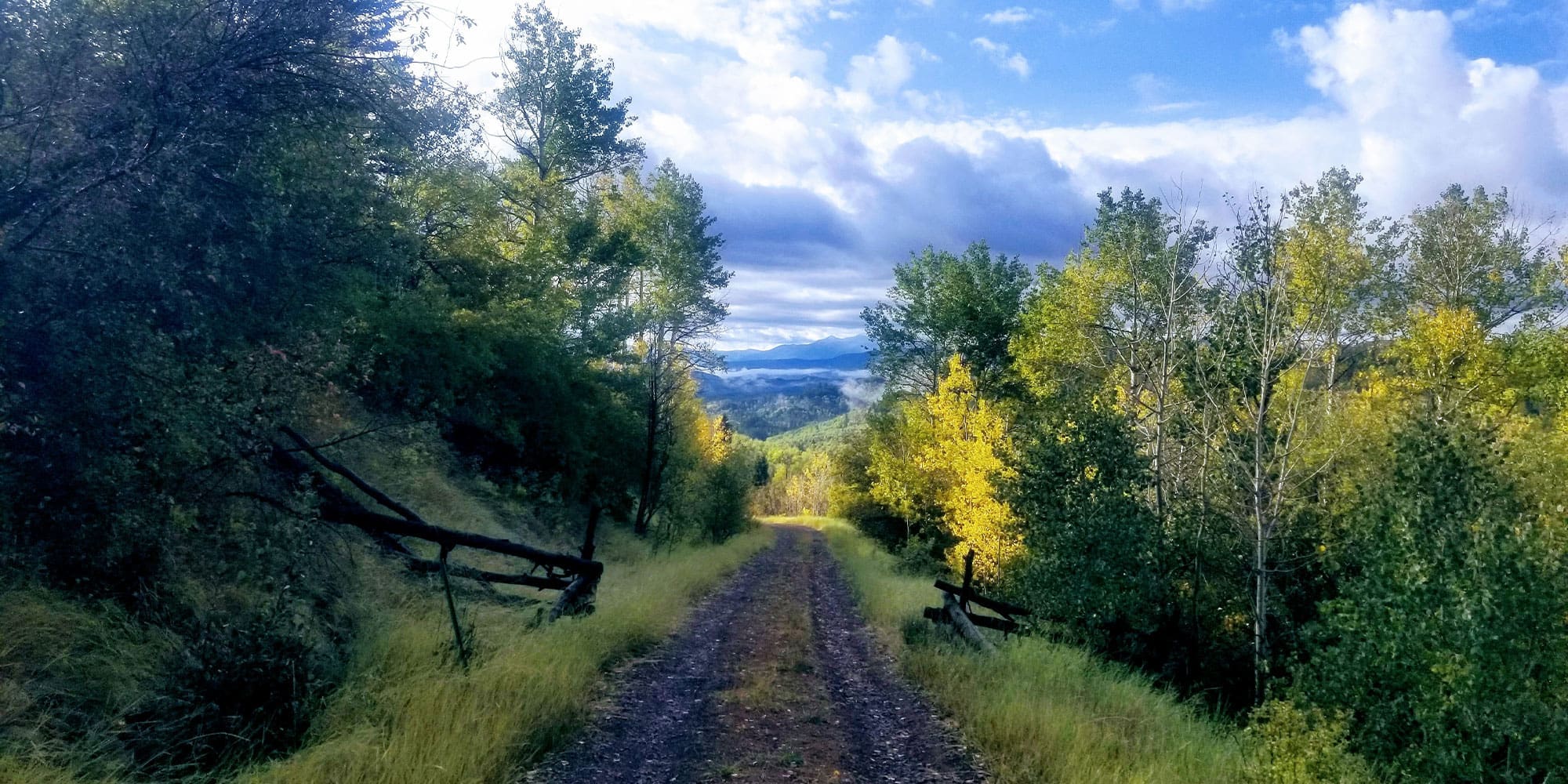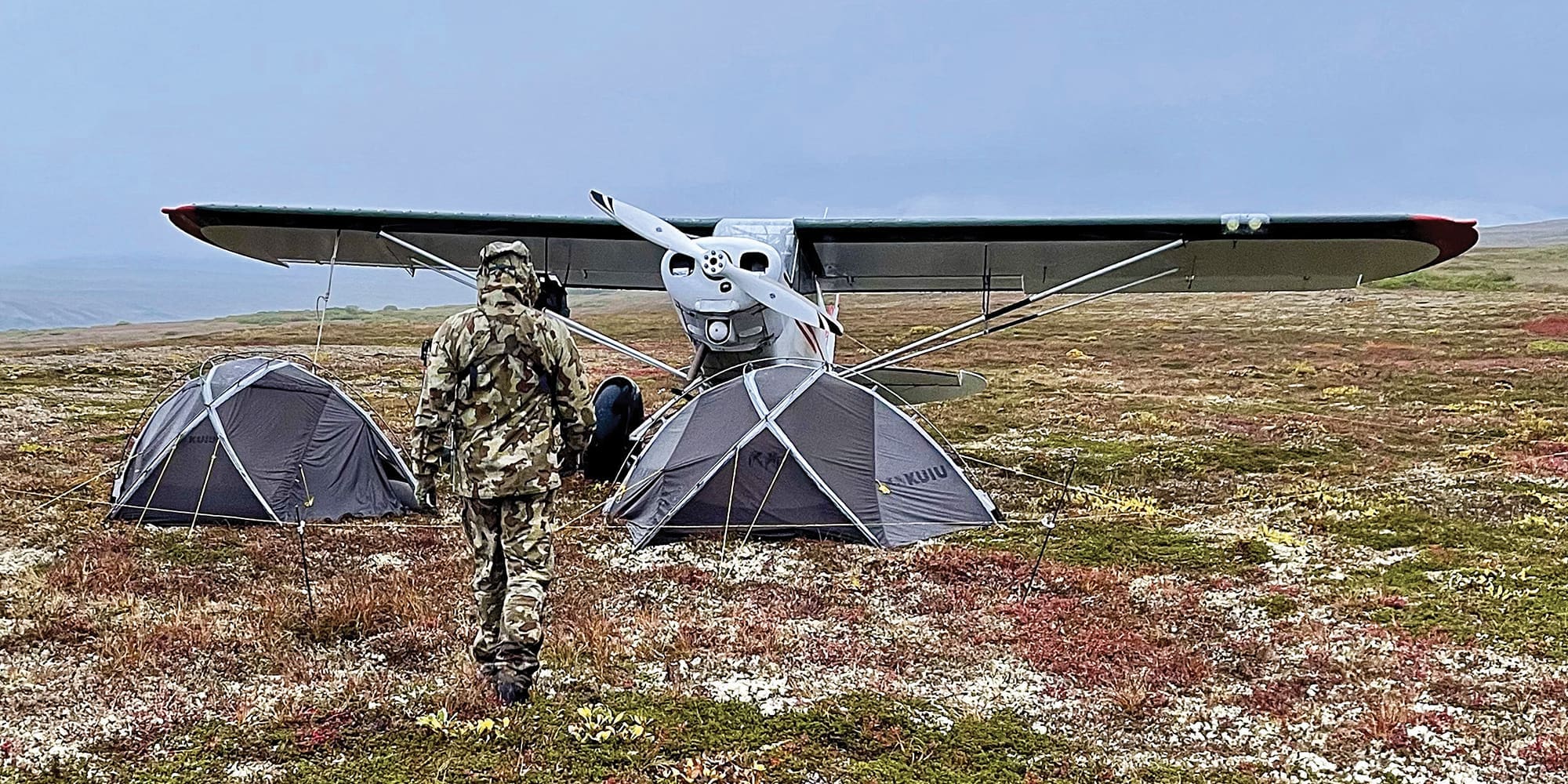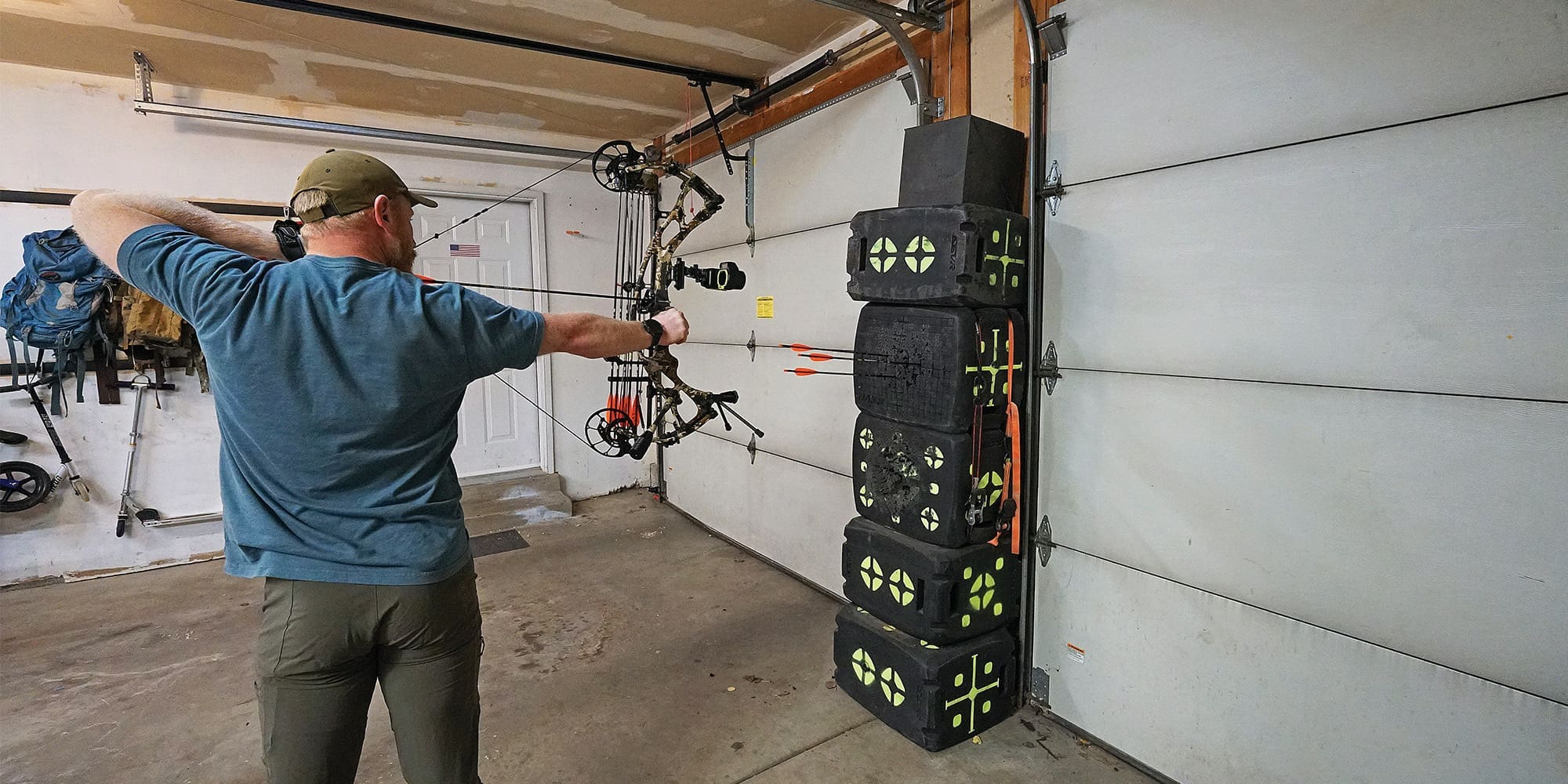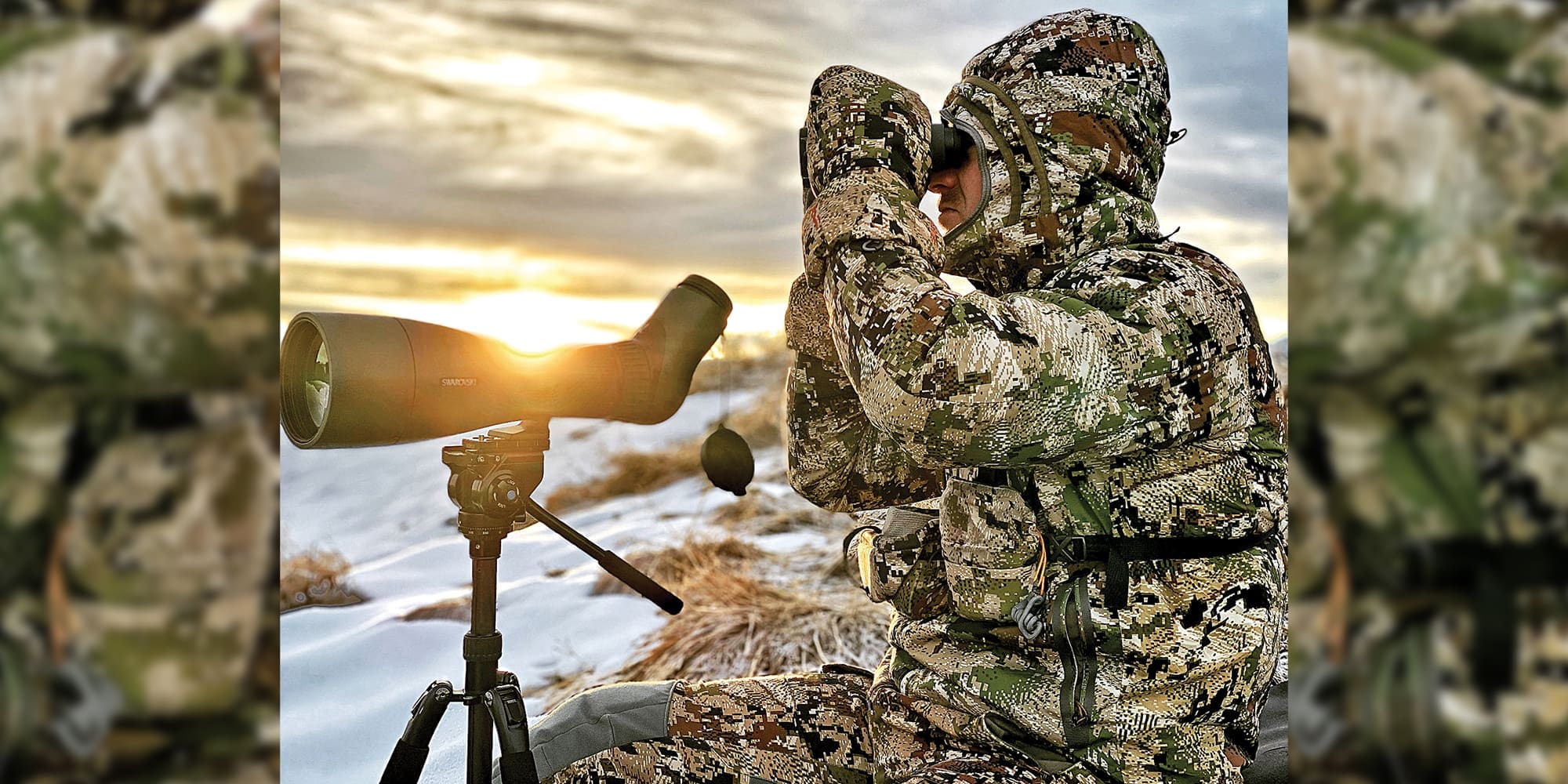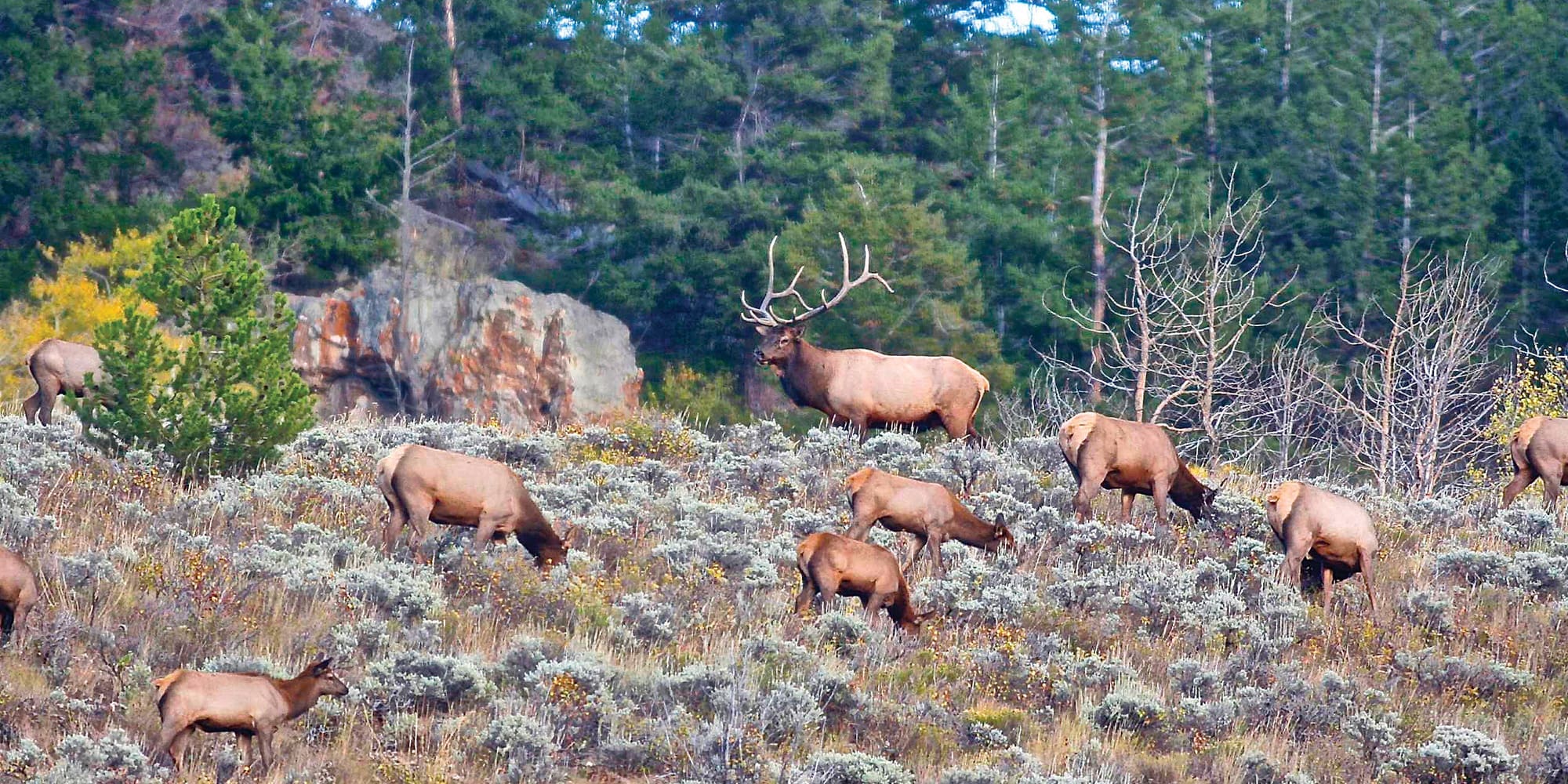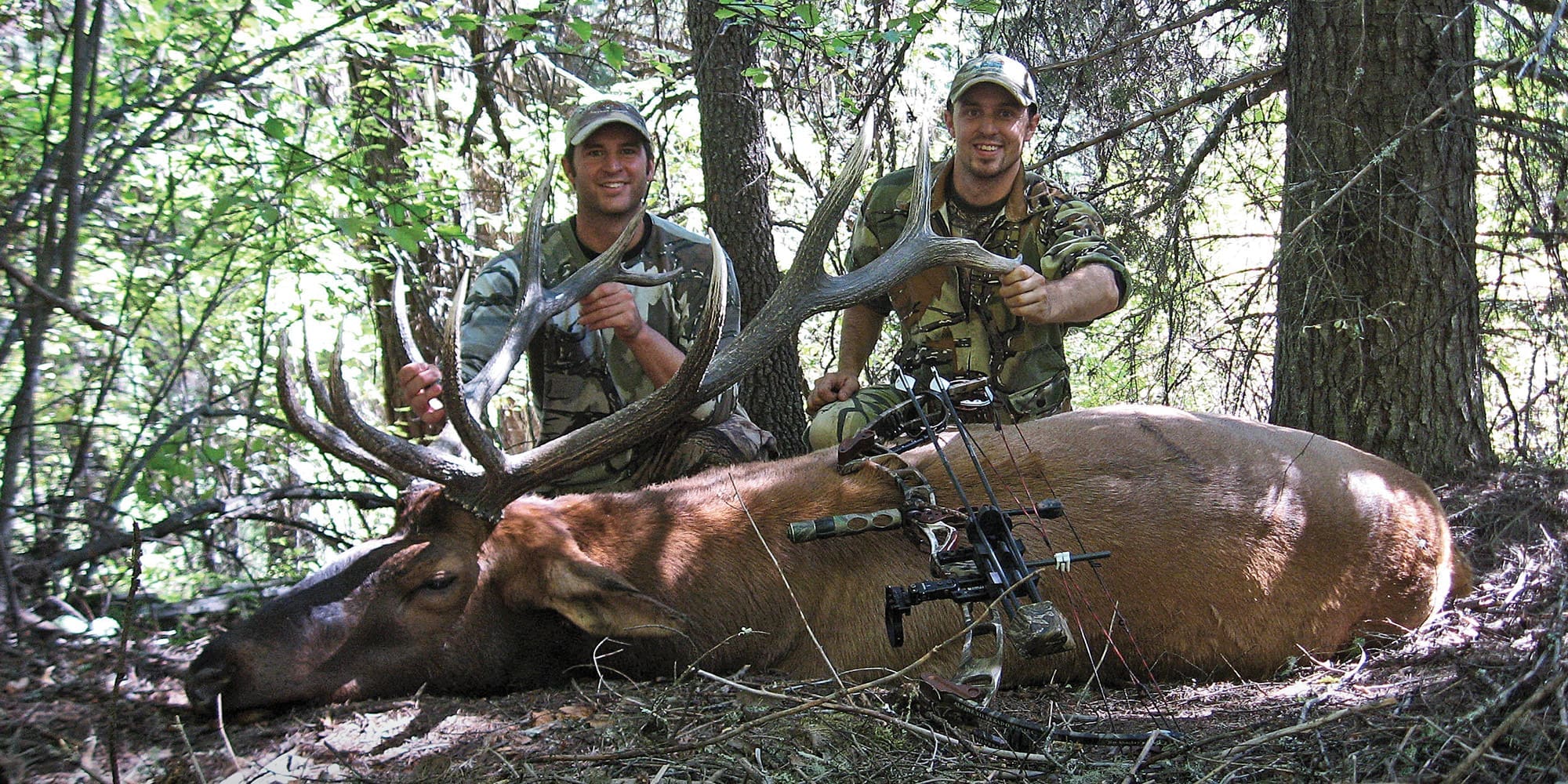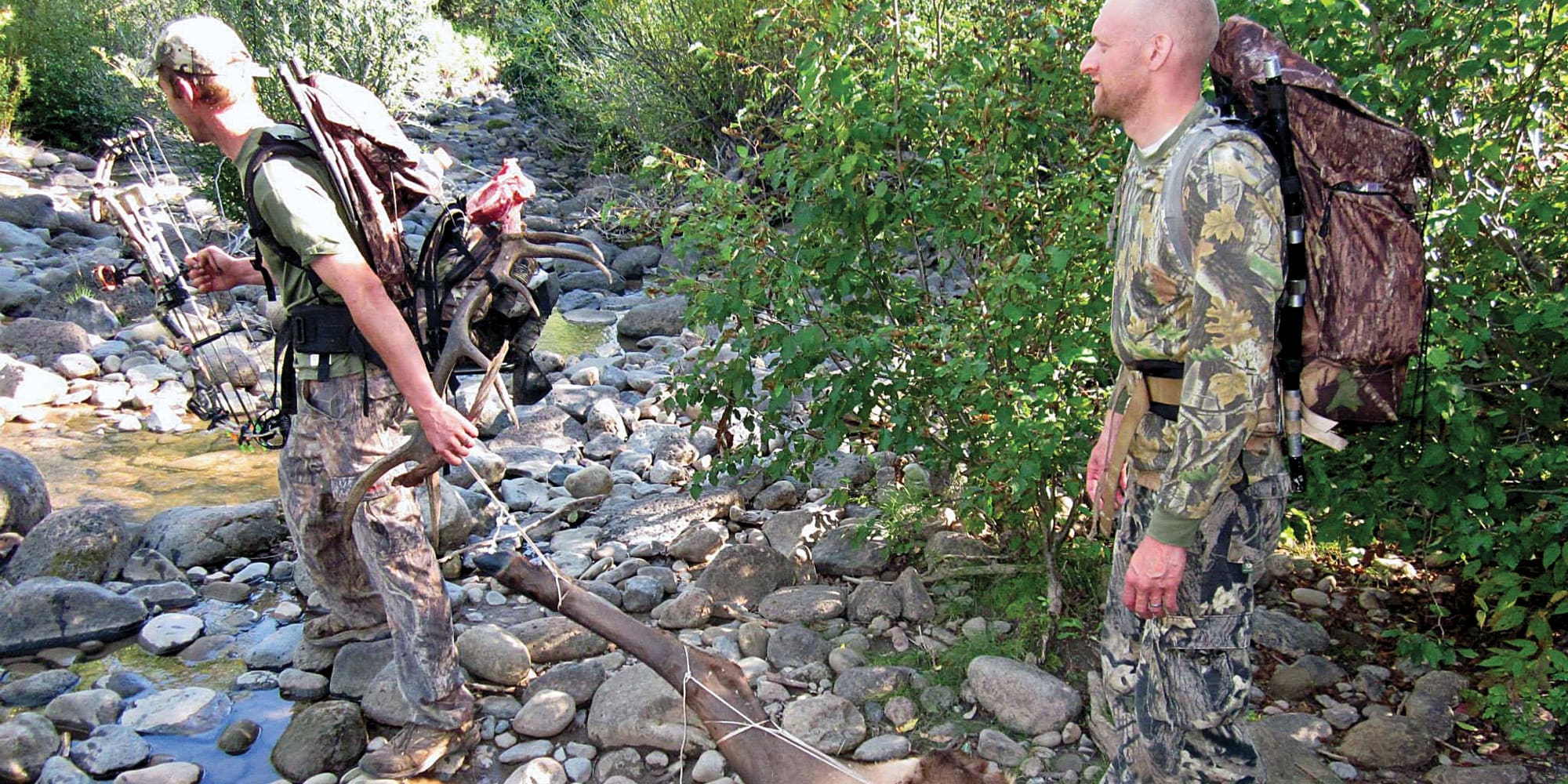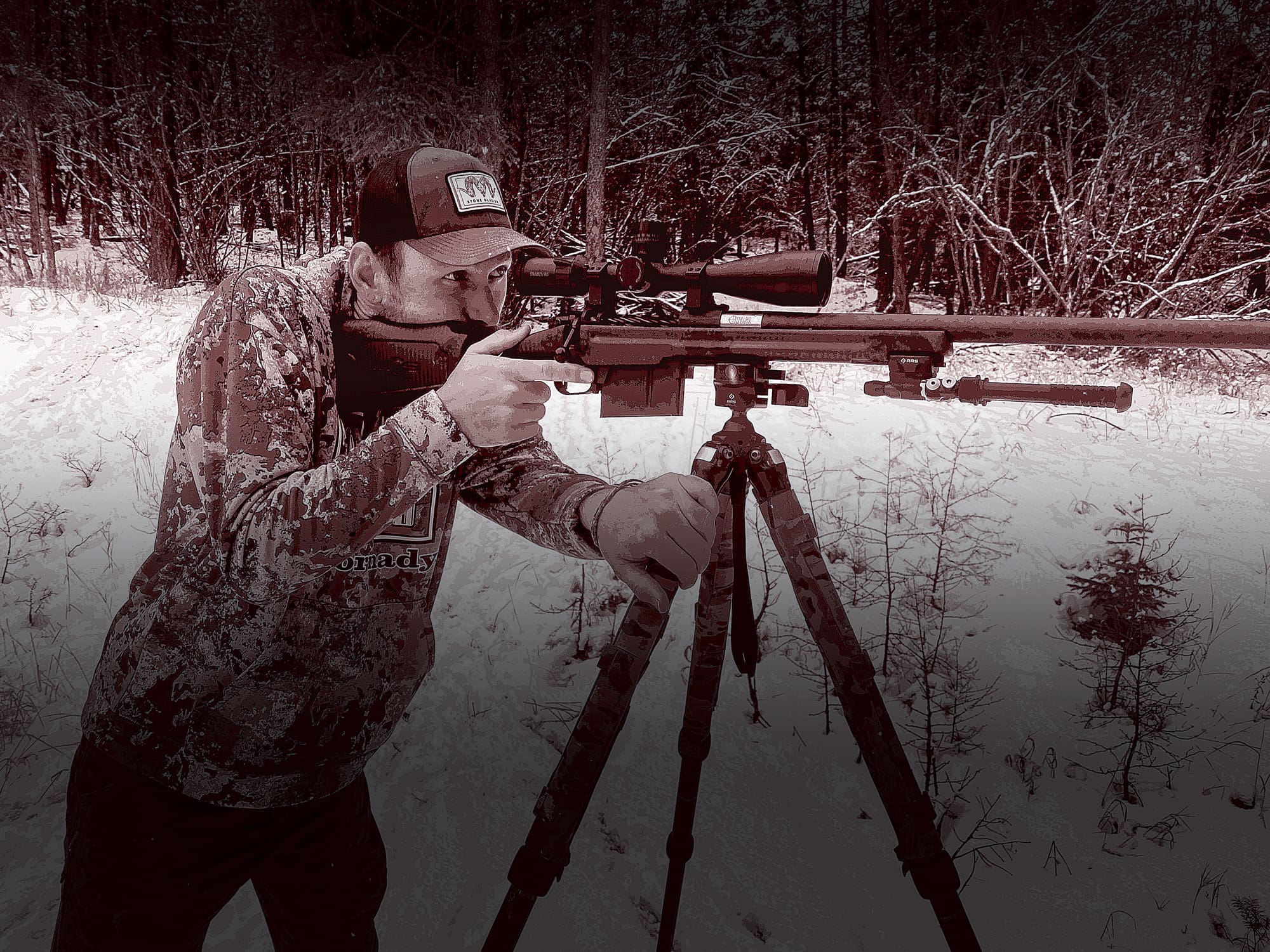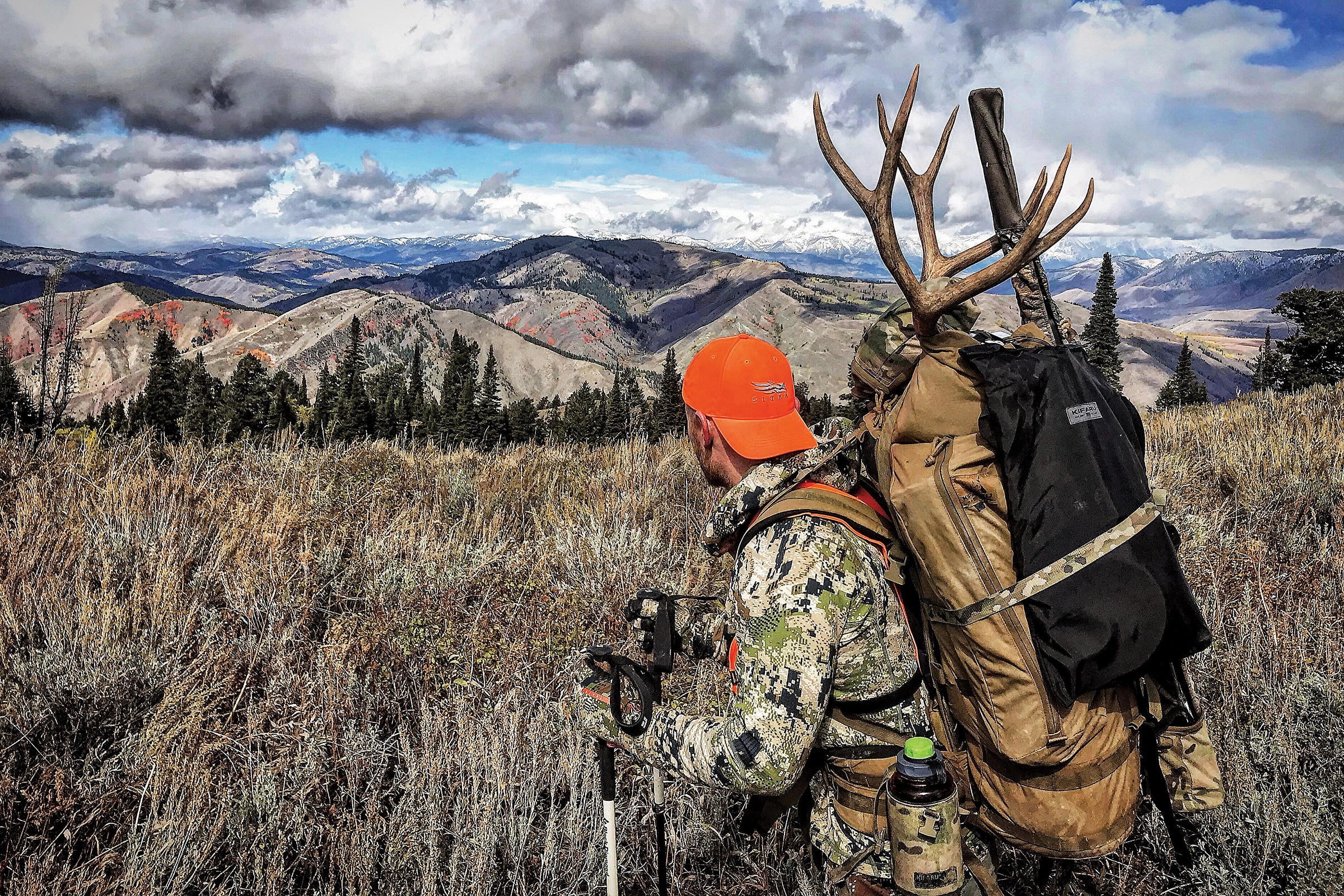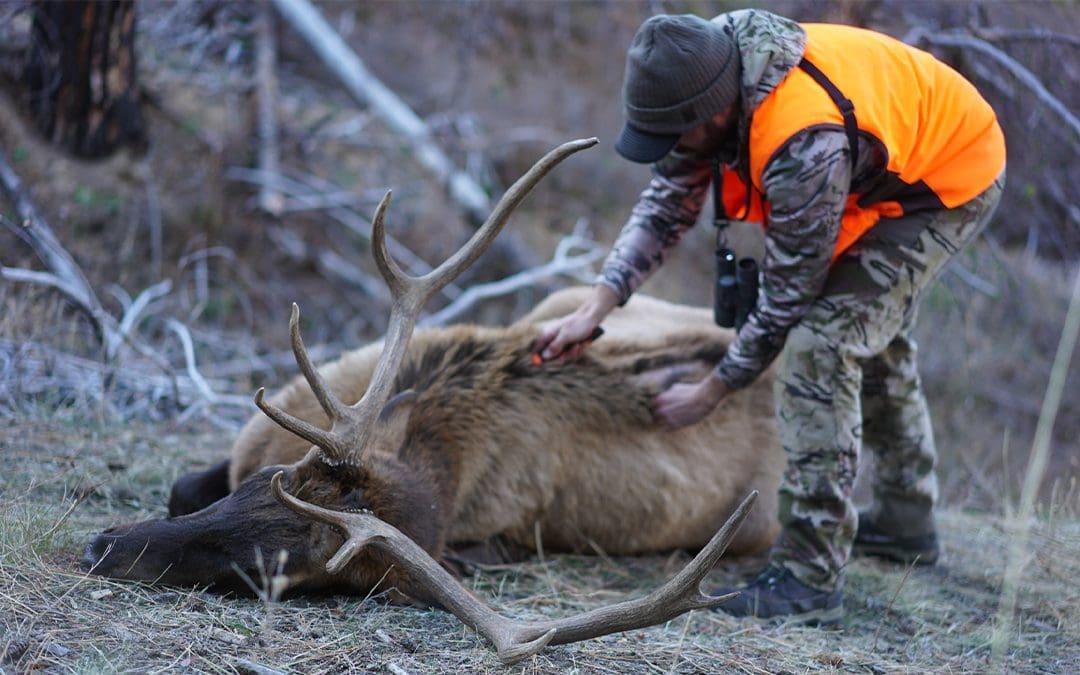
NOTICE: Certain links on this post may earn a commission for Western Hunter Magazine from Amazon or our other affiliate partners when you make a purchase. Thank you for your support.
Tips to More Success on Over-the-Counter Elk Tags
For most western hunters, the elk areas we dream of hunting and the over-the-counter elk tags that we actually get to hunt are two completely different things. Of course, everyone dreams of taking a 400-inch bull, but the reality is these types of elk are few and far between. Even bulls in the mid-300-inch range can be sparse for hunters not fortunate enough to draw a premier elk tag or not able/willing to shell out thousands of dollars for a private-land, trophy bull hunt.
What this leaves us with is the standard elk hunter. This hunter’s primary elk hunting experience will be an over-the-counter elk tag until the day he or she can pull a limited-entry bull permit and have a chance to chase a trophy.
Success on Over-the-Counter Elk Tags
While sifting through the majority of harvest rates for over-the-counter elk tags, success seems to average around 10%-15% across the West. This may seem dismal, but in my experience, it’s the same guys who are successful year in and year out.
I believe anyone can consistently be in the “successful” category when hunting over-the-counter elk tags. Many successful elk hunters have a few things in common: they know elk, they know the area, and they know the elk in the area. It sounds basic, but putting the pieces together is often the hardest part.
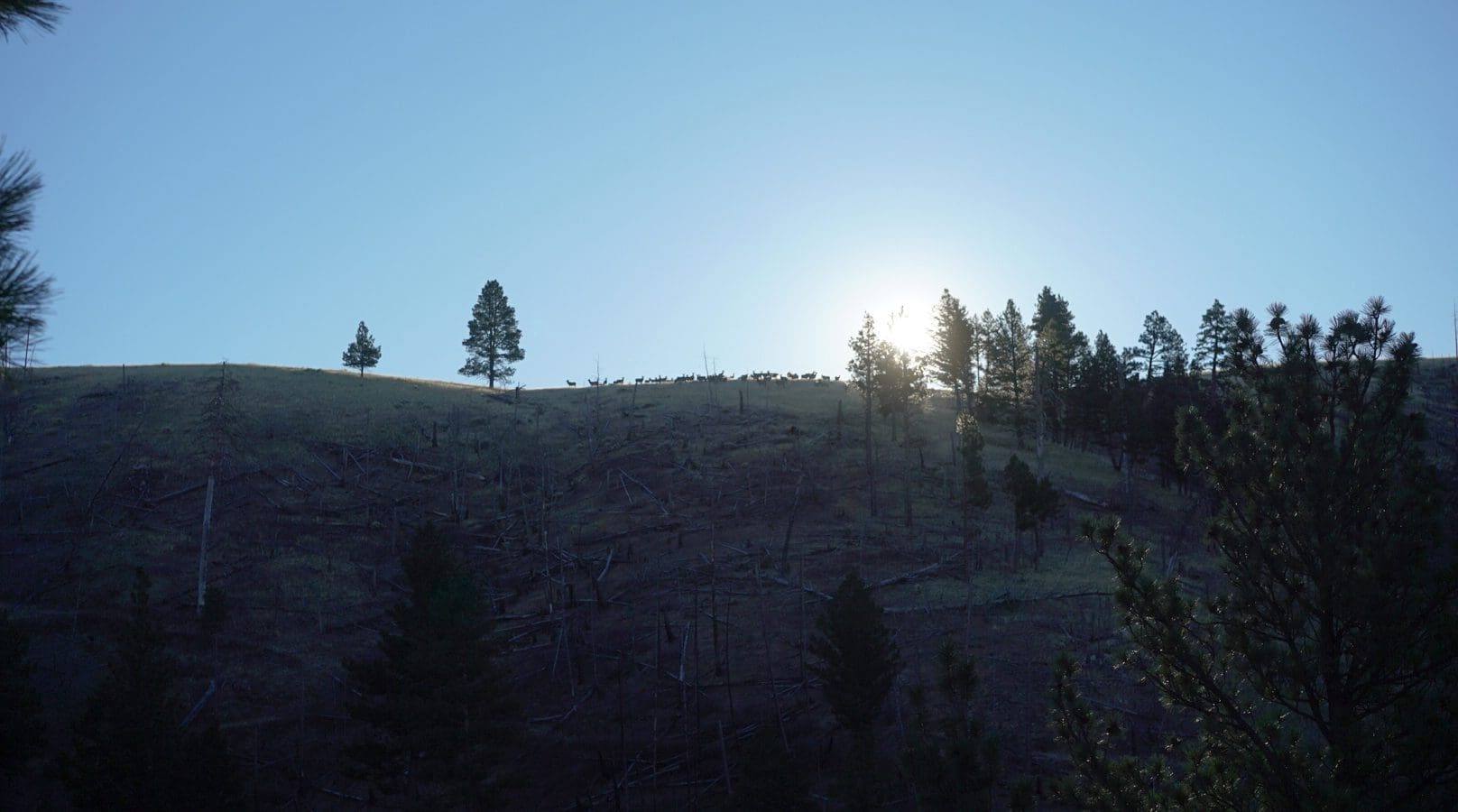
Know Elk
Knowing elk and how they behave can be one of the most important factors of successful hunters. Assuming that elk are the same or like any other animal can be a mistake.
As a hunting guide, most of my clients come from the Midwest, South, or East Coast. They are generally first-time elk hunters and have no elk where they live. After watching a lot of hunting television and reading elk hunting articles, the major misconception is that elk are like turkeys. How this thinking came about I have no clue, but if you think elk behave like turkeys, you’re already at a loss.
The same goes for many western hunters who live in states with limited opportunities to hunt elk. If you assume hunting elk is the same as hunting deer, you may be at a loss when you step foot into an over-the-counter elk tag area. Of course, many things do carry over, but understanding how elk are different is the key to providing yourself the upper hand you may need to be successful.
Power of the herd: Elk are primarily herd animals, and as such, they exhibit herd behavior. Even bulls that are alone have herd behavior ingrained in them. Just because they’re not in a herd at the moment doesn’t mean that they aren’t a herd animal. This information can be vital, especially when it comes to the use of calls to stop a spooked elk.
A herd maybe a few animals to hundreds. Although they are herd animals, the bull’s relationship with the herd is different than that of the cows. A cow nearly always leads the herd. This difference in behavior between bulls and cows can be a key to locating bulls on over-the-counter elk tags.

A classic-looking, successful Montana late-season bull elk hunt.
Over my years of hunting and guiding, I’ve found that I tend to run into elk in some of the same places year after year. Having a honey hole or secret spot takes time in the field, but understanding where elk like to be and why can help you narrow down the places to look.
Bull behavior during the hunting season: During the rut, find the cows and you find the bulls. This is pretty self-explanatory, but the real question is where do the bulls go after the rut?
Where bulls go after the rut depends a lot on whether the elk are migratory or already in a suitable place to winter. I’ve found that resident bulls that rut in their winter range tend to stay with the cows longer than bulls in areas that will soon have to migrate to a winter range.
Bull elk expend more energy during the rut than any other time of the year. Bulls that will soon have to migrate to a winter range will often seek solitude or bachelor up to regain the energy lost during the rut and build strength for the upcoming winter.
When bulls break from the herd, they often seek areas with heavy timber, grass, and water in a local area without a lot of travel involved. These areas are often hard to get to and have minimal pressure from hunters, making it a great resting area. I’ve watched bulls that have stayed within a 600-yard radius for over a week when unpressured in an area that has everything they need.
Where the elk prefer: The majority of great elk country doesn’t actually hold elk regularly. Instead, elk find a preferred isolated pocket or area they like and gravitate toward that small area.
When looking for these pockets, it’s important to remember that elk are grazers and that elk have escape routes already planned before they’re spooked. Because elk are grazers much like cattle, they prefer to eat grass. They will browse when necessary, but if able, elk will gain most of their nutrition from the grass. This means that areas with open parks and lots of grass, often near cover, should be the focus.
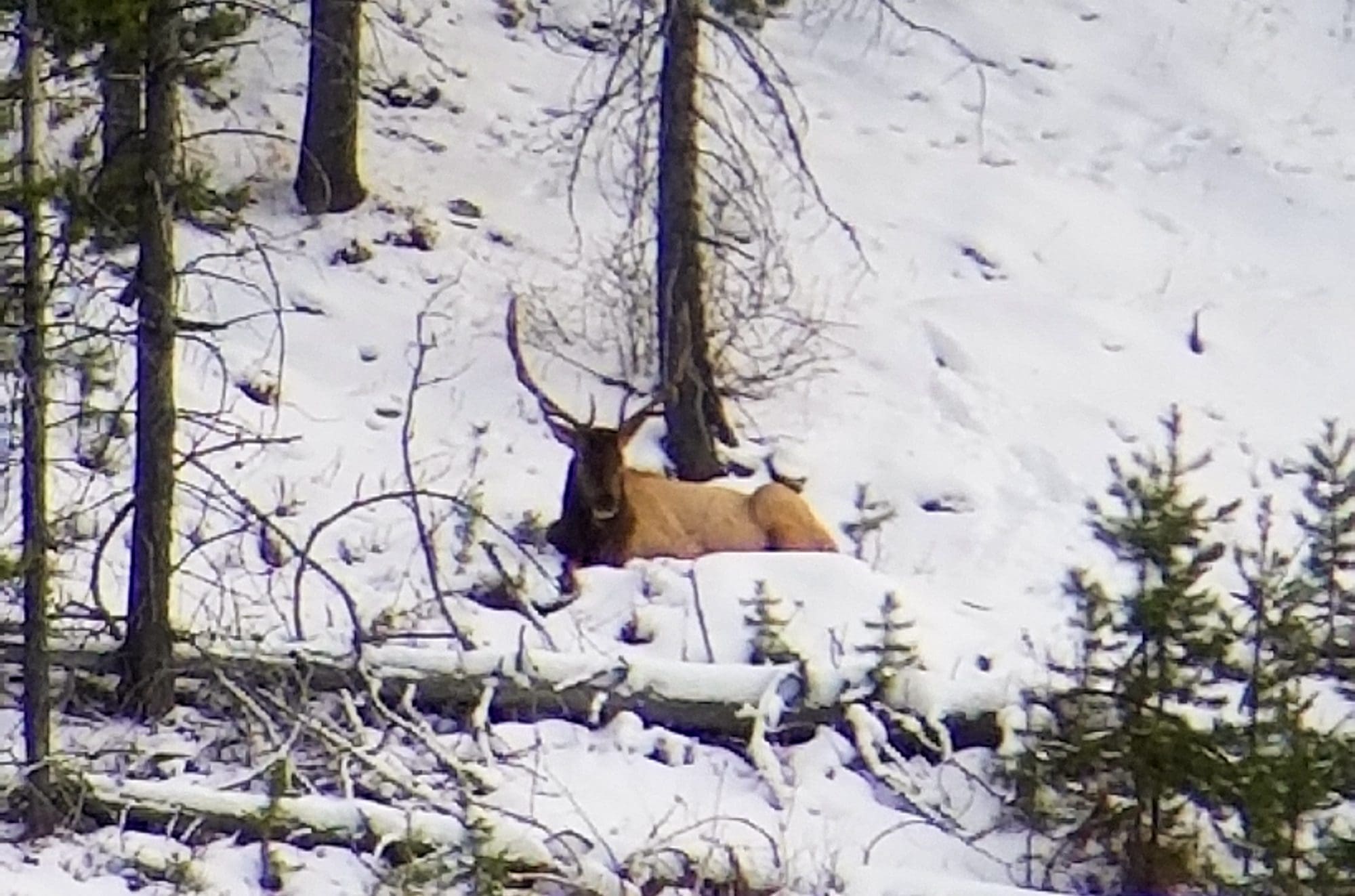
Late-season bulls often leave the herd, seeking solitude to put on weight before winter sets in.
Elk also prefer to bed on finger ridges. This is because, as a herd, they have ingrained escapes depending on where danger is coming from. Oftentimes, they rely on a lead cow for these escapes after they have cleared the immediate danger. Bedding on the finger of the ridge gives elk the most escape options.
Know the Area
One of the toughest challenges to hunting any over-the-counter elk tags for the first time is finding the elk. However, once you start to find where the elk prefer to hang out in any given mountain range, you’ll be able to focus your time on hunting the area as opposed to looking for an area to hunt.
As mentioned earlier, the majority of great-looking elk country may not consistently hold animals. That’s why it’s important to find the areas within the expanse of elk country that the animals prefer.
E-scout: With technology today, physical presence in the area doesn’t have to be where you start learning your unit. I start every hunt looking at maps, topo lines, satellite images, and Google Earth layouts.
In over-the-counter units, I first look for the often overlooked areas, places that have no roads, or that start with a steep uphill walk. Even just a mile from a road is often enough to break away from the crowds and find an unpressured pocket of animals.
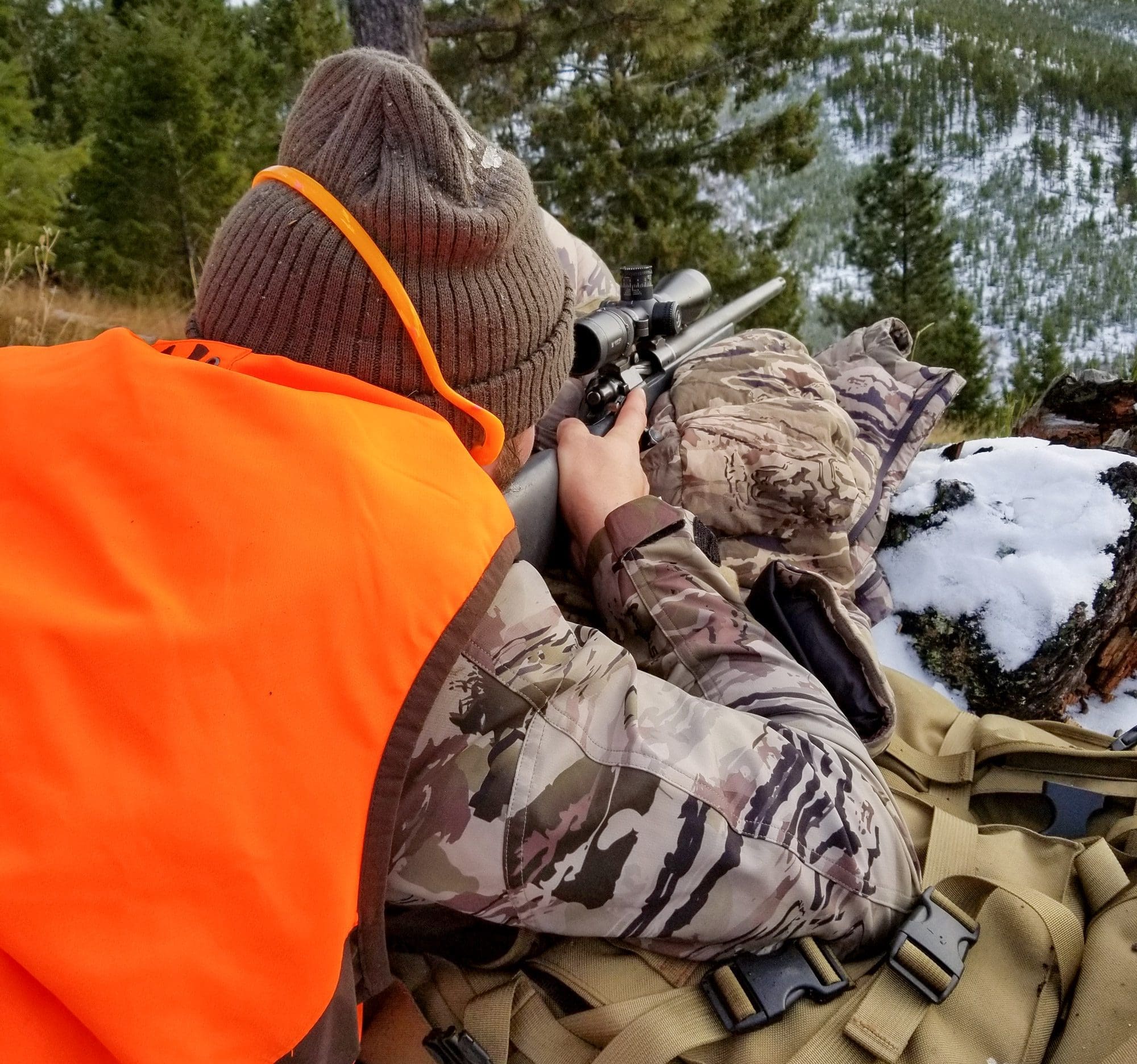
I look for pockets that are generally between roads with no road going through the pocket. I look for places that require a lot of uphill hiking to get to them, followed by a steep downhill to hunt them. This amounts to starting uphill from the truck and then hiking uphill in order to get back to the truck. The uphill trek both ways seems to eliminate 95% of hunters. I find that areas like these often hold unpressured animals.
Another tactic before I start hunting is to use property-mapping software like the OnX Hunt App to find access points to parcels of public land that may be a long walk to access without permission or overlooked access points that others may not notice.
Some of the most important features to locate are good glassing vantage points. I will pre-scout good vantages on Google Earth and then spend the first day in the area mobile checking all the glassing spots, especially in a new area. Knowing how to get around the unit is key, especially if you spot a bull off in the distance. OTC units are often harder to find elk in than other areas, so when you do find one, knowing where to go to get there may be the most important piece of the puzzle.
Know the Elk in the Area
In my opinion, it’s better to hunt one area five times than five different areas once. The reasoning behind this is that every time you hunt an area, you learn something that will help you the following year. Hunting the same area again and again increases your chance of success, because you become more familiar with animal habits and patterns in that particular area.
Pressure patterns: When elk get pressured, they tend to not stick around. However, they are still creatures of habit. Pressured elk herds tend to keep within a pattern of familiarity in order to stay safe. They bed in the same places and often travel the same paths. They know their escape routes before danger rolls along in order to stay a step ahead of their natural predators.
I’ve noticed that many elk herds move in four-day cycles. Of course, the elk’s pattern area varies, but for the most part, pressured elk move in large circuits to avoid danger. These larger patterns are more consistent with elk that receive heavy hunting pressure. It’s important to remember that humans aren’t the only animals that hunt elk. Some herds receive hunting pressure year-round from larger predators. Other herds only receive pressure when hunting season opens.

When glassing, make sure that you have plenty of clothing to keep you warm and comfortable.
Predicting the pattern: As hunters, we are the only predators that have the ability to predict animal behavior. Using this to your advantage will help you be successful.
Pay attention to the animals’ behavior. If you tend to see elk in a certain area every four days or so, try to predict when the elk will be there and then hunt it accordingly. When hunting over-the-counter elk tags, I like to have around five spots that I know hold elk and rotate through them as the week progresses. I try to plan my hunt around the animal’s patterns and find different areas where the elk are likely to be during different times of the week.
The main factor in patterning a herd of elk is to be observant and recognize that when the elk move, where do they escape to and why? This can often take some time, but it’s time well spent.
Keeping notes while scouting and hunting is a great way to recognize patterns. Journaling what you see, how the animals reacted, and where they could be headed is important information when figuring them out.
Look at where they are and where they might go. Elk on circuits tend to move from areas of thicker cover and safety to more open areas with easier access to food. When in the open, they usually get pressured and then make the rounds again.
Other hunters: Over-the-counter elk tags always involve a lot of other hunters, but this doesn’t need to be a bad thing. Think about how elk react to pressure, where they might go, and where other hunters might shy away from. All these things can help point you in the right direction.
Some of my more successful hunts in new over-the-counter elk tag areas were when other hunters were everywhere. If the pressure bothered me, imagine what it did to the elk. In order to escape the crowds, I ended up running into elk doing the same.
It seems like a no-brainer, but heavy pressure can concentrate elk into difficult places to hunt. However, with added numbers of animals seeking safety there, it becomes huntable. Areas that are harder to access or are thicker in cover are where the elk feel safer.
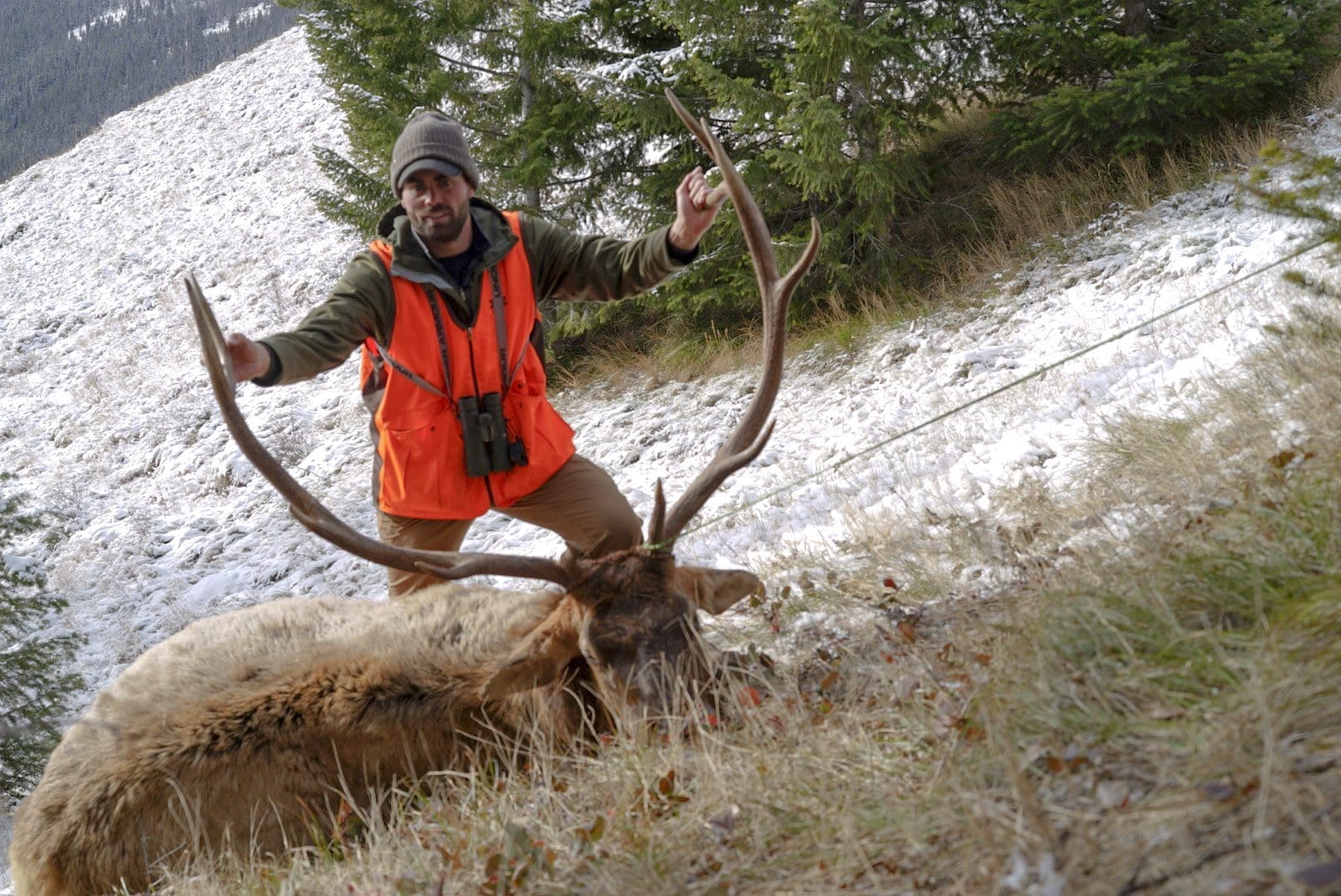
It’s no secret that often it’s the same hunters who are consistently successful. Good gear, some savvy, and knowing your hunt area are all important keys.
Worth the Effort
Hunting in an over-the-counter elk tag area can be tough for those starting out. However, by getting to know elk, know an area, and know how elk react in that area, you can be successful year after year.
Quality elk hunting doesn’t have to be relegated to a special tag drawn once every eight to ten years. There can be some awesome hunts to be had year after year throughout the West.
For me, the thrill is there whether I harvest a small raghorn for meat or a 380-class bruiser. That is the appeal of elk hunting. Just to have the opportunity to hunt elk almost every year can make over-the-counter elk tags worth the effort.


